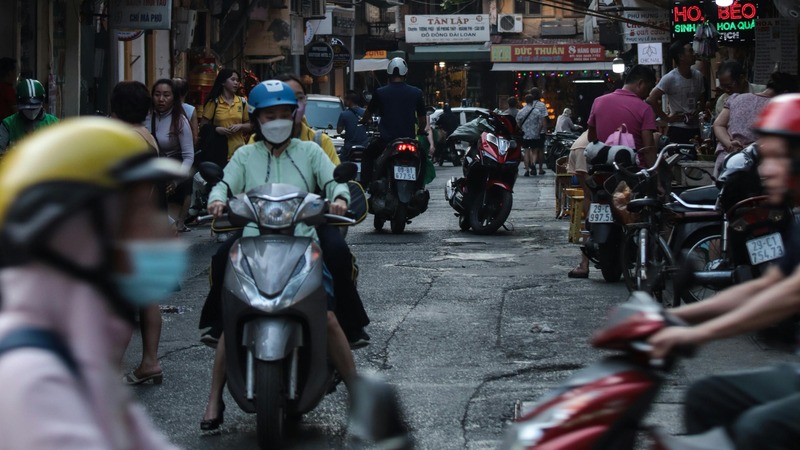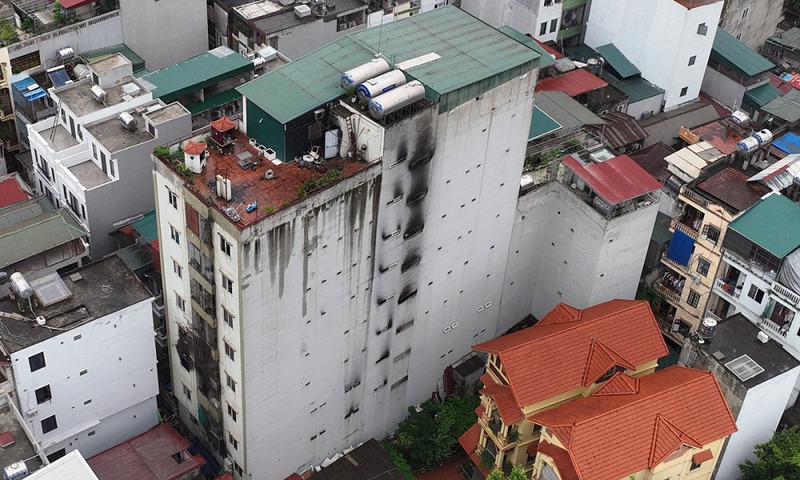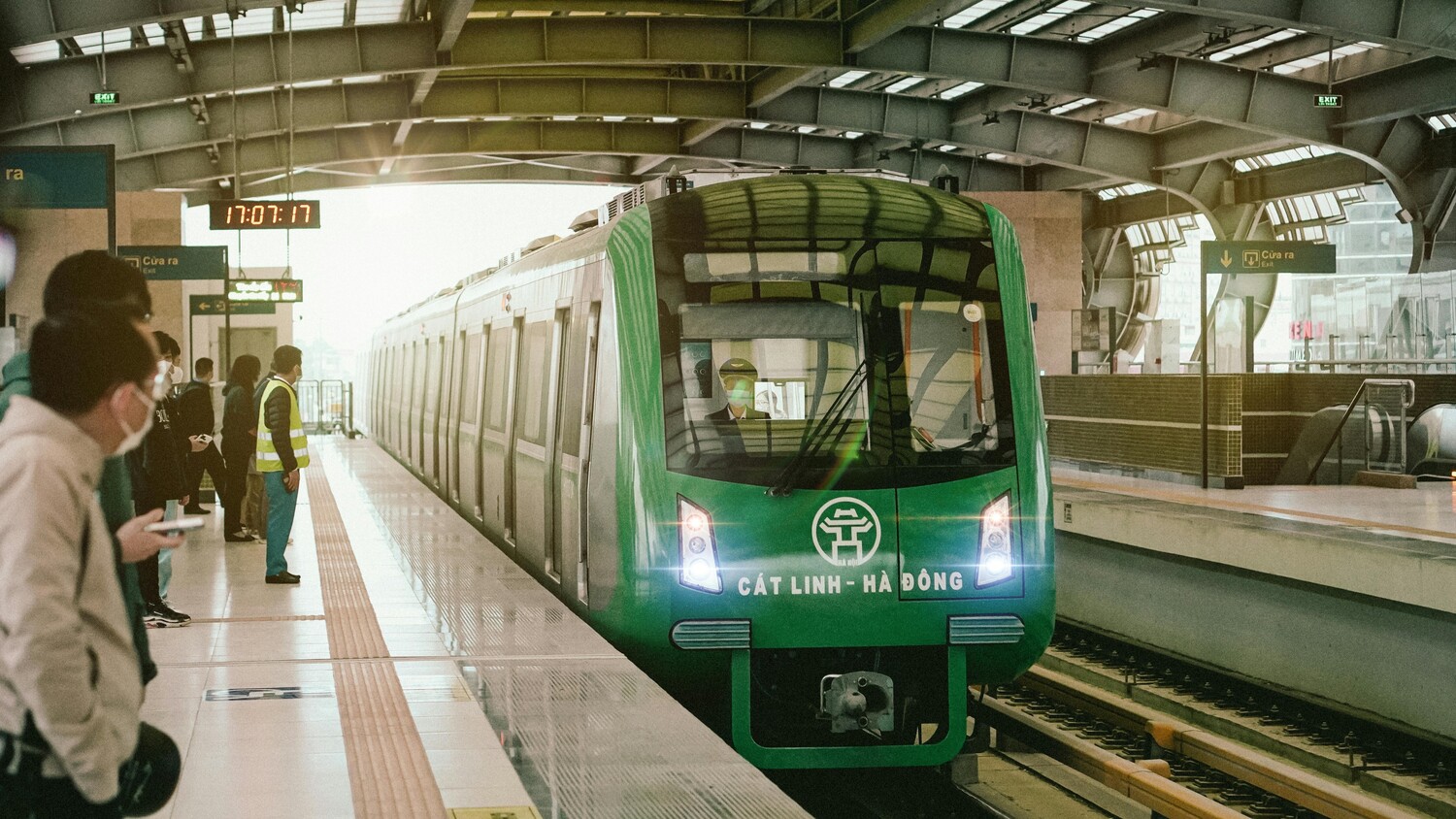Analysts have weighed in on a ban on gasoline-powered motorbikes in Hanoi’s inner core by 1 July 2026 – and even the best of the nation’s patriots have questions about the feasibility of the proposed timeline.
While talk of the transition away from fossil-fueled vehicles has been nearly a decade in the making, the less-than-12-month timeline for implementation of Prime Minister Pham Minh Chinh’s Directive No. 20 requires realism surrounding the country’s practical infrastructure constraints and socially ingrained misgivings about electric vehicles and their associated fire risks.
The challenge will be in striking a balance between updating the country’s energy grid to meet its growing electricity needs as charging demands surge, and empowering Vietnamese citizens with the narratives to self-propel the “green transportation” revolution.

Real and imagined dangers
Memories of fire: Hanoi’s 2023 Thanh Xuan blaze
One glaring challenge which stands in the way of Hanoi’s transition to electric vehicles and the adoption-at-pace of greener individual transportation alternatives is the narrative – real and imagined – surrounding EV charging infrastructure and their linkage to apartment fires.
A fire which killed 56 people and injured 37 others in a nine-storey apartment in Hanoi’s Thanh Xuan district in September 2023 was one of the country’s deadliest residential fires in recent memory – initially rumored to have been caused by an e-scooter battery, but later confirmed by authorities to have been caused by the short-circuiting of a gas-powered motorcycle.
Many local building authorities moved to ban electric vehicle charging infrastructure in the wake of the incident, despite confirmation the initial e-scooter claims were untrue. That’s a view which still persists in Vietnam today, ranging from complete bans on EV charging during particular periods of time, to outright bans on EV parking and entry in certain residential blocks.
The incorrect attribution of causes related to this incident and its attendant consequences on the local gig rider economy are well-documented by Rest of World’s Lam Le in an incisive study of the implications of misinformation on the development of Vietnam’s EV economy.

Exploding parts: Questionable batteries and aging power grids
At the same time, genuine concerns abound over the quality of unknown-origin lithium-ion batteries commonly used in electric vehicles; the integrity and safety of many of Vietnam’s old and aging residential infrastructure; and the capacity of those systems to handle increased charging demand. Warnings from industry experts that low-quality chargers and mass charging within outdated electricity systems could overload the power grid and lead to fire or explosion risks merit proper investigation by building and planning authorities.
The 2023 Thanh Xuan blaze may have been a misattribution event, but EV battery explosions in densely populated residential complexes remain a reality elsewhere around the country.

A tax on lower-income earners?
For many ride-hailing and delivery drivers who stand to be most affected by the July 2026 ban, gas-powered motorbikes are a form of livelihood whose forced replacement could prove financially unattainable or logistically impractical.
A platform driver speaking to The Straits Times suggested electric motorbikes were only appropriate for short-distance trips, compared to the 100 kilometer-per-day distances canvassed by his work. To satisfy those distances, Vietnam News indicates an electric vehicle replacement would need to be sourced from the mid-range segment, capable of a 70-100 kilometer run on full charge at the 20-30 million VND (USD$760-$1,330) price range.
For the ordinary Vietnamese person in the big city working an average monthly salary of 8-10 million VND (USD$300-$380), a forced vehicle replacement would leave them financially stranded.

Public infrastructure gaps
One section of Declaration No. 20 orders for the balancing and re-allocation of local budgets to develop the connectivity of Hanoi’s public transport network in a roadmap until 2030 which prioritizes electric buses and trains.
Coverage from VnExpress reported Hanoi had initial ambitions for its public transport system to account for 45-50 per cent of trips in its pilot Low-Emission Zone (LEZ) areas of Hoan Kiem, Ba Dinh, Hai Ba Trung and Dong Da districts. That was an anticipated twofold increase on its 2024 usage data, which indicated public transport patronage in Hanoi had only reached 19.5 per cent.
That’s still well short of the 30-35 per cent public transport patronage by 2025 target laid down by government officials in Resolution No. 48 in 2022. Put another way – while the figure changes over time, analysts suggest a hard motorbike ban should not be made policy until a certain rate of public transport patronage has been achieved. Hanoi might not be there yet.

Figures from Hanoi’s Department of Transport indicate the city operated 6.9 million motorbikes by the end of 2024, with 6.9 million of those powered by gasoline.
If Vietnam wants to achieve its 2050 target of having all motorized vehicles transitioned to electricity and green energy, significant investment in electric charging infrastructure and public transportation will be required to fast-track the switch and embed behavioral-level changes into the public consciousness.
That’s an effort requiring not just political will, but public buy-in.
